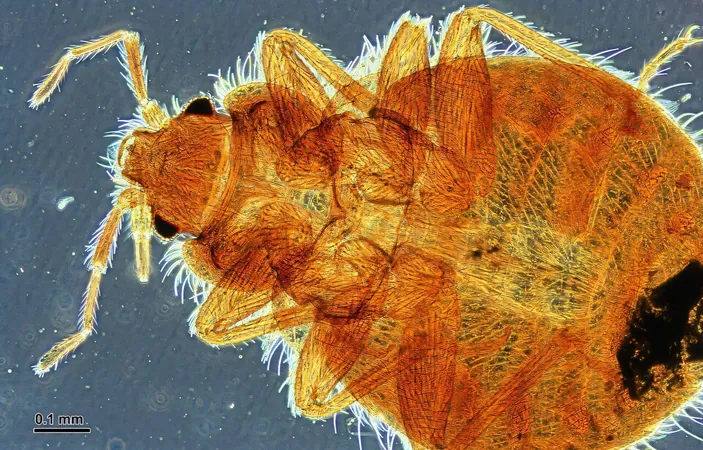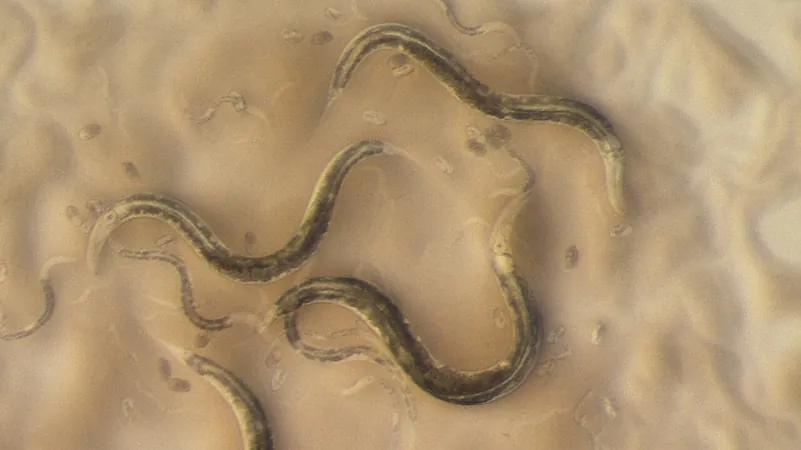
The Bedbug Chronicles: When Did These Tiny Terrorists Become Our Nighttime Nightmare?
2025-06-02
Author: Emma
The Fearsome Rise of Bedbugs
No one wants a night filled with dread at the thought of sharing their bed with tiny bloodsuckers! Bedbugs have earned their stripes as humanity's most unwelcome roommates, making life miserable for homeowners and travelers alike. But how did these pests become such a persistent nuisance?
A Journey Through Time: The Bedbug's History
Surprisingly, bedbugs have been prowling the earth for a staggering 13,000 years, coinciding with humanity's shift to urban living, according to groundbreaking research from experts at Virginia Commonwealth University and Virginia Tech. As our ancestors moved closer together in cities, bedbugs found their perfect breeding ground, thriving in the crevices of human habitats.
What Are Bedbugs, Anyway?
Bedbugs are small, flightless insects that feast on blood—primarily human blood! They are part of a vast insect family that evolved over 100 million years ago, with their closest relatives being the ‘bat bugs’ that suck blood from bats. The bedbug lineage split from these bat bugs approximately 245,000 years ago, marking the beginning of their long and infamous association with humans.
From Bats to Humans: Bedbugs’ Incredible Adaptability
Why did these tiny parasites make the leap from bats to humans? Early humans likely shared living spaces with bats in caves, granting bedbugs the opportunity to switch hosts. Over the millennia, they evolved traits that made them perfectly suited to living alongside humans.
The Urban Boom: A Surge in Bedbug Populations
As humans began congregating in cities about 13,000 years ago, bedbug populations exploded! Their genetic adaptations allowed them to flourish in urban environments, creating a successful partnership with humanity that has lasted through the ages.
Tracing Bedbug Lineages: Unraveling Their Genetic History
How did researchers trace the lineage of these pesky bugs? By analyzing the genomes of modern-day bedbugs and creating family trees, scientists drew parallels with human DNA studies to reveal their historical relationships. Interesting findings indicate a rapid increase in bedbug populations about 13,000 years ago, in perfect sync with the rise of early human cities.
Implications for Modern Pest Control
This research not only uncovers the long-standing relationship between bedbugs and humans but also sheds light on pest resistance to modern insecticides. By understanding the genetic developments that have occurred over time, we can design smarter, long-term strategies for coexisting with these tenacious pests.
So, the next time you prepare for a night’s rest, remember—the bedbug is more than just a nocturnal nuisance; it’s a survivor of millennia, intricately linked with our own evolution.









 Brasil (PT)
Brasil (PT)
 Canada (EN)
Canada (EN)
 Chile (ES)
Chile (ES)
 Česko (CS)
Česko (CS)
 대한민국 (KO)
대한민국 (KO)
 España (ES)
España (ES)
 France (FR)
France (FR)
 Hong Kong (EN)
Hong Kong (EN)
 Italia (IT)
Italia (IT)
 日本 (JA)
日本 (JA)
 Magyarország (HU)
Magyarország (HU)
 Norge (NO)
Norge (NO)
 Polska (PL)
Polska (PL)
 Schweiz (DE)
Schweiz (DE)
 Singapore (EN)
Singapore (EN)
 Sverige (SV)
Sverige (SV)
 Suomi (FI)
Suomi (FI)
 Türkiye (TR)
Türkiye (TR)
 الإمارات العربية المتحدة (AR)
الإمارات العربية المتحدة (AR)